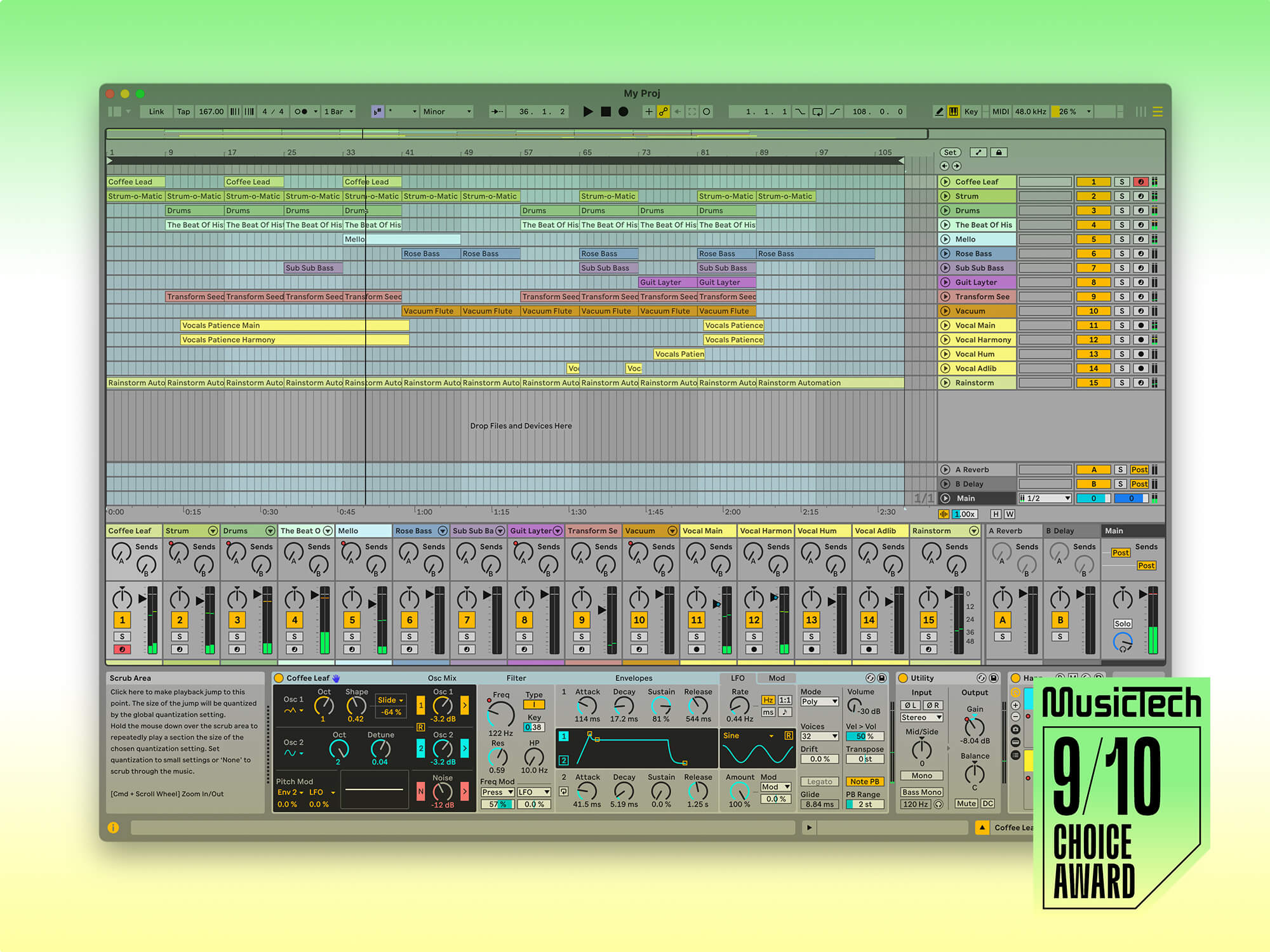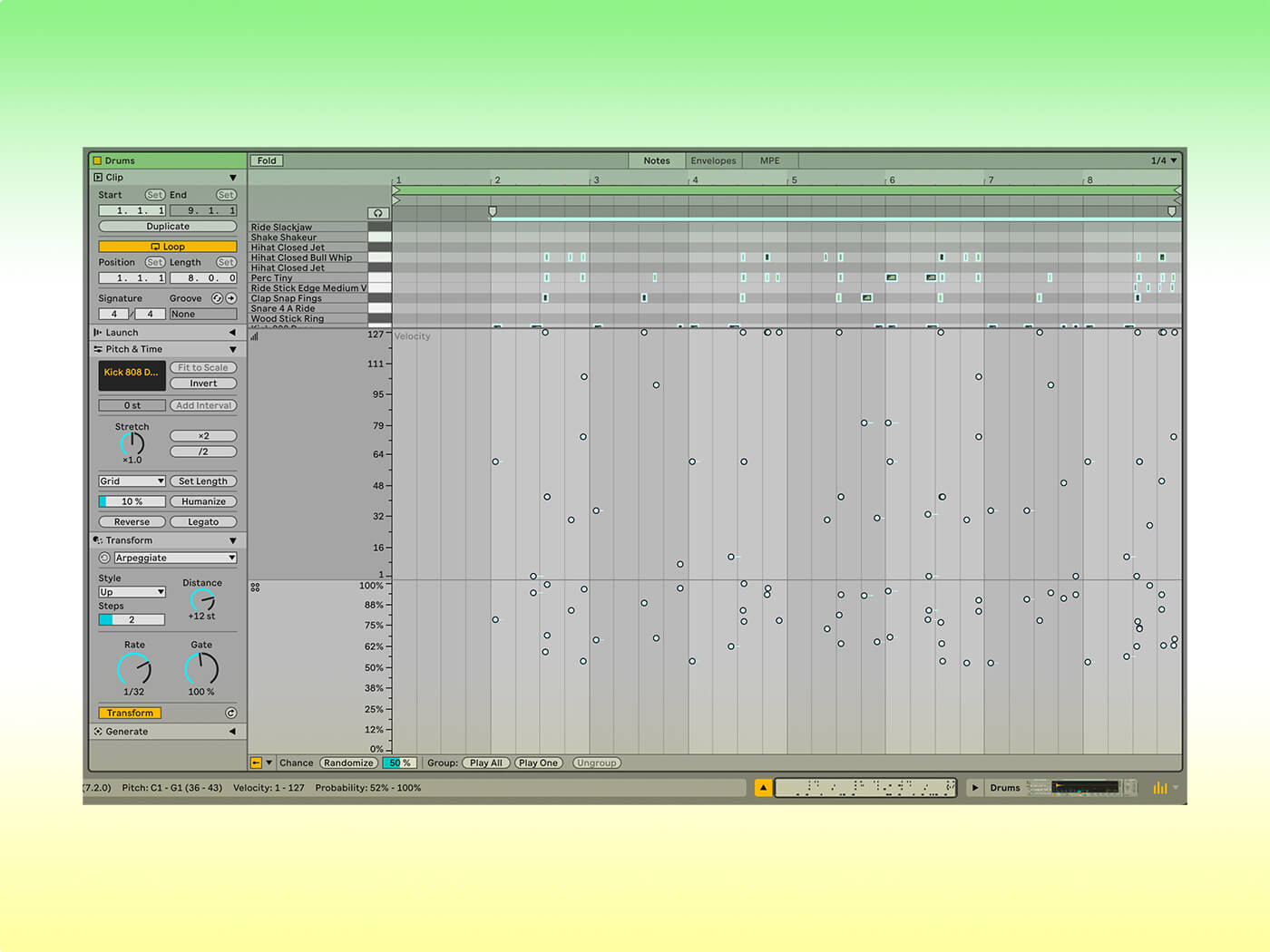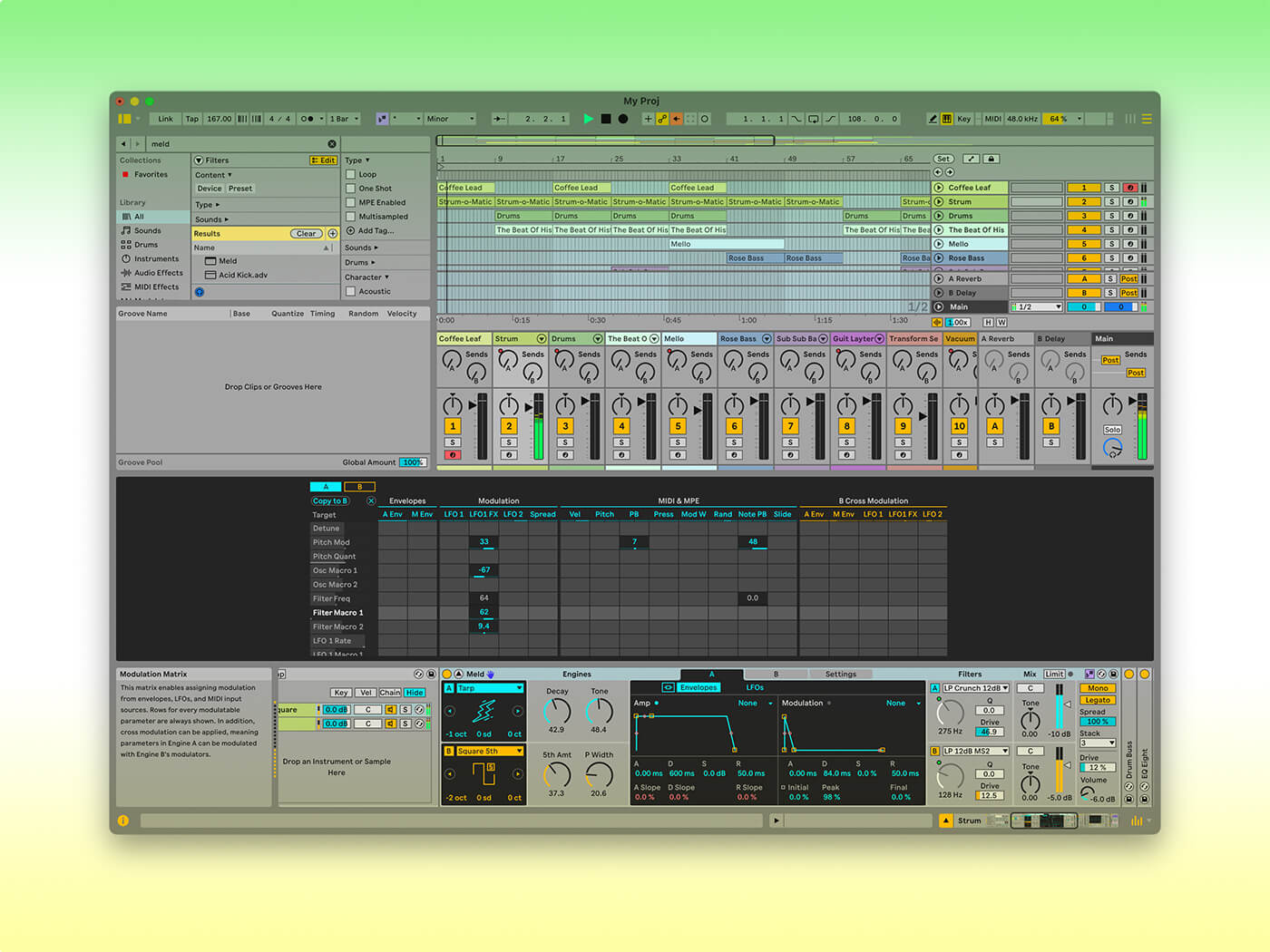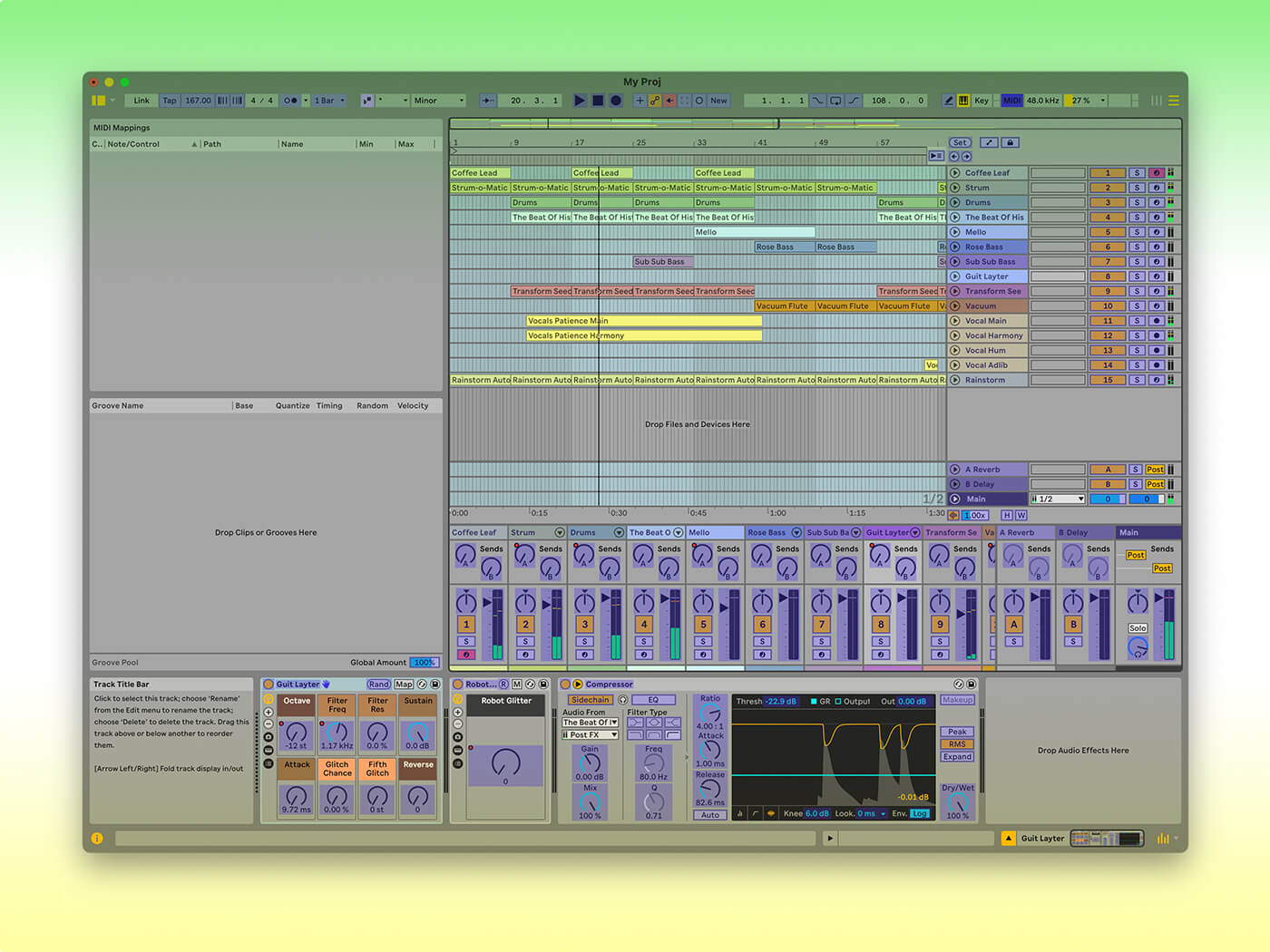Ableton Live 12 is still one of the best DAWs out there
23 years on from its original launch, Ableton’s flagship DAW is more feature-rich than ever. But is it still fun?

Ableton Live 12
Review Overview
Our rating
9
Our verdict
⊕ Improved MIDI editing and generators
⊕ Many small but significant workflow enhancements
⊕ Better, more powerful browsing features
⊕ Still arguably the best clip-based DAW around
⊖ Only one new major instrument and audio effect
Intro version £69
Standard version £259
Suite version £539
Crossgrade pricing for existing users
ableton.com
When Ableton first released Live in 2001 it offered musicians and DJs a new take on live performance – hence the name – and its developers were early pioneers of beat-matching technology. It’s taken on countless more producer-focused features, but Live 12 in 2024 is still recognisable to those early adopters; its signature one-window grey interface is present and correct, albeit with a lot more going on these days. Even with version 12’s new colour themes and a scalable second window, it still holds closely onto the DNA of Ableton Live version 1 — and is still just as fun
What is Ableton Live 12?
Live is best described as an all-round DAW system for macOS and Windows with a heavy focus on MIDI clip programming and sequencing, plus audio recording tools that lean extensively on automatic time-stretching and manipulation. As well as supporting third-party instrument and effect plugins, it boasts many stock plugins that are deeply integrated into the system.
The Intro version has a fairly bare-bones setup while the Standard edition has 13 instruments, 16 sound packs and 42 effects, and the full-fat Suite version provides 20 instruments, 33 sound packs and 58 audio effects.
At its heart are two main views: Session, where you can see and play all your clips stacked in Live’s classic fashion, and Arrangement where you can see and edit a more conventional song-based timeline. One of the numerous workflow changes in version 12 is the ability to view the Session mixer in Arrangement view so you no longer have to switch to Session to change levels. Users have been requesting this feature for some time, so perhaps this’ll be one thing to convince them to upgrade to Live 12.

Ableton Live 12 browser and MIDI tools
Another valuable workflow change that will benefit every user is the significant enhancement of Live’s browser.
Now, tags and filters are available for easier searching – for example by creator, key, character or type and you can create your own custom tags. While arguably kind of overdue and not as comprehensive as something like Cubase’s MediaBay, it’s a big step forward for managing our increasingly sprawling collections of sound sources. One new feature that is harder to find in other DAWs is a “similarity search” tool, where your library is analysed and compatible samples, instrument and drum presets are shown with a special icon meaning Live can display others with similar characteristics, and also swap in similar samples to Drum Racks.
MIDI editing gains a ton of new functionality in version 12, starting with new key commands for splitting and chopping notes. A MIDI Note Probability function provides hands-on control of how likely notes or groups of notes are to play back, with randomisation support. There are new MIDI generators to help you make beats and melodies and come up with new ideas quickly and like Live’s other built-in tools they are nicely integrated into the workflow and quick and intuitive to use. There’s Rhythm which generates patterns of notes and velocities, Seed which randomly generates notes, Shape which creates runs of notes based on different curves or ramps, and Stacks which generates chords using sets of rules. All are a lot of fun to use and will be useful for all kinds of electronic music which – generally speaking – Live is especially well suited to.

New Ableton 12 plugins
There are two major new plugins to play with starting with Meld, a synth with two macro oscillator engines and a deep subset of tweakable controls that’s good at creating textures, harmonics, atonal sounds and the like. With a pop-out matrix it’s on the more advanced side but still possible for less experienced users to work with. Then there’s Roar, a dynamic saturation effect for everything from subtle warming to fierce sound mangling that again has expandable windows for more detailed control.
Live 12 now has improved Scale Awareness tools, with the ability to conform individual clips, effects and devices to specific musical scales and elsewhere, pitch and time tools have been split into two sections for more detailed and accurate editing. Of particular note are expanded options for humanising, stretching and quantisation of MIDI and audio, which are very welcome. Live’s MIDI Polyphonic Expression (MPE) support has been expanded too, with the Meld synth in particular able to take advantage of the extra expression generated by compatible controllers.
Aside from the headline new features there have been many smaller but no less important changes, far too many to list but here are some of our favourites, at least a few of which you may be very glad to hear about. Ableton has fixed a longstanding latency issue when recording, with a new Keep Latency option on audio tracks. You can now magnify waveforms in Arrangement view for better legibility as well as editing Return Tracks’ order, reversing MIDI clips and using an expanded set of key commands with “momentary” mode meaning they activate a function only for as long as held. There’s also now a de facto bounce in place available for you to glue down a clip, even if Live doesn’t call it that. When using two screens, each one can be zoomed to different degrees or their zoom levels linked together which is a small but super-useful thing.

Should you switch to Live 12?
If you’re used to a different DAW, switching can be a learning curve and this perhaps applies to Live more so than some competitors, such as Logic Pro, Cubase or Studio One, which offer similar workflows.
Many of those coming to music production afresh may have found their purchase of an audio interface or MIDI controller came with Live Lite – a canny move on Ableton’s part to expand its user base. And the system maturing over the years from a looping tool into a much more fully-fledged production environment has attracted a large number of producers of all levels and in all fields of music. It has its own way of doing things and packs tons of functionality into a remarkably slick and friendly interface.
The developers have pulled off the trick of keeping Live fun and accessible on the surface while providing a great depth of tweakability (much more so now than in the earlier years) and including heavyweight extras like the Max For Live design environment with the Suite edition.
Many users will find that the Standard edition suits their needs perfectly well, since the main thing you gain with the pricier Suite is more instruments and effects – otherwise the functionality is essentially the same.
While some of the updates to 12 are arguably a little overdue they are no less welcome for it and Live remains an excellent music creation platform for all kinds of producers.

Key features
- For Mac and Windows
- Up to 76 GB of sound content
- Unlimited tracks with up to 192 kHz audio support
- Clip-based MIDI and audio stretching and beat-matching
- Multiple bundled instruments and audio effects
- MIDI generators and processors
- Modular, resizable interface
- New scale and tuning tools
- Deep integration with Push hardware
- Max For Live with Suite edition